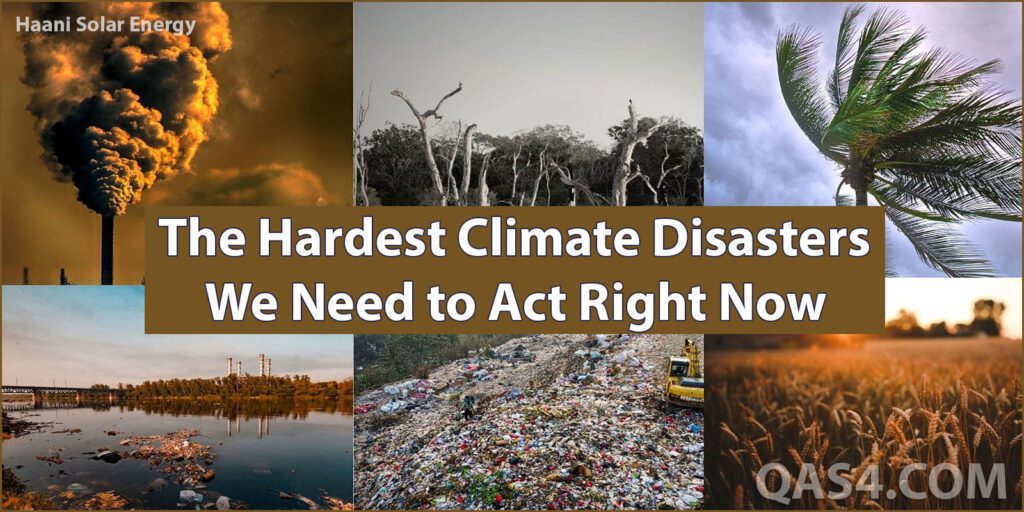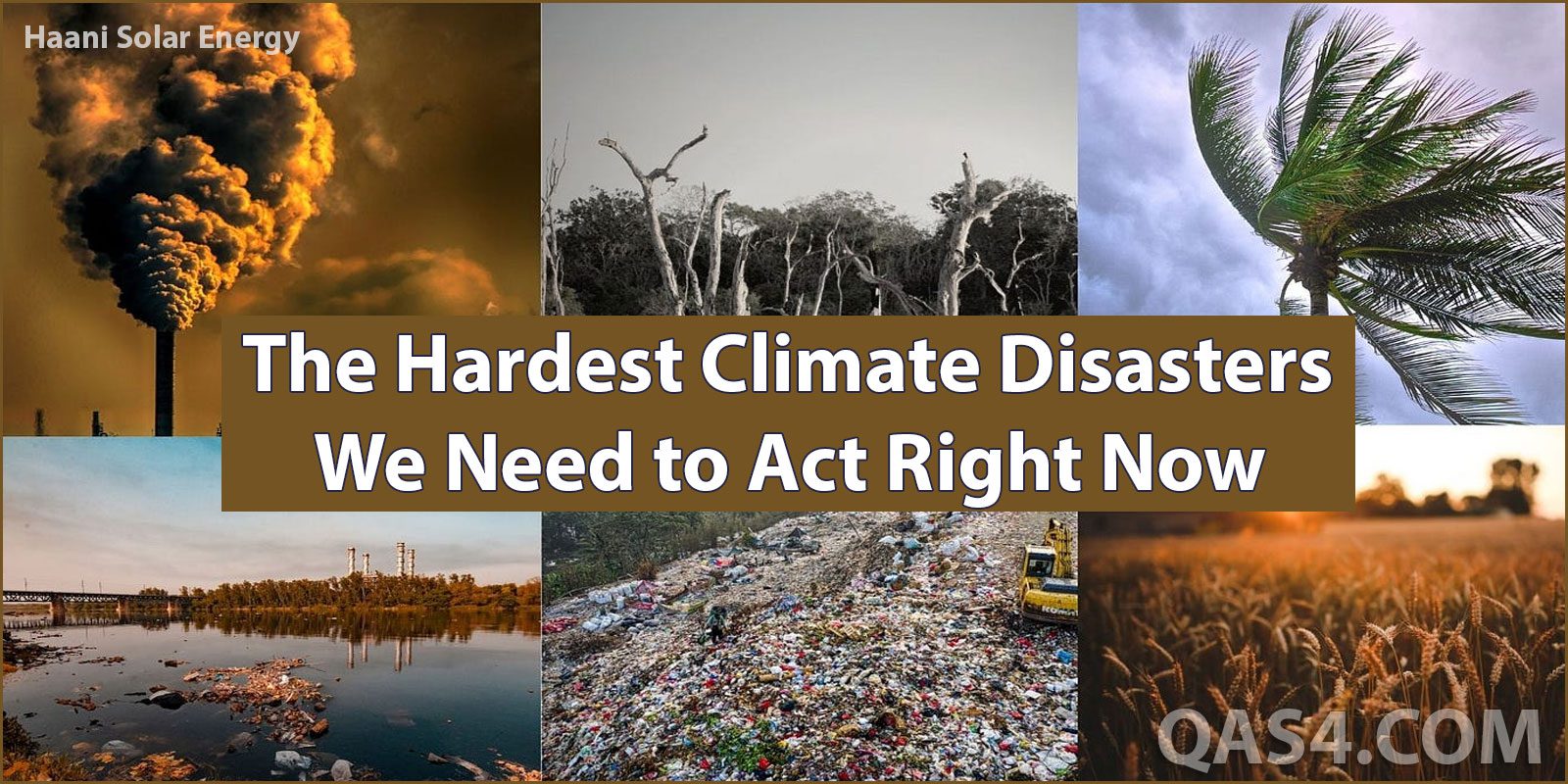The Climatic Disasters Prove That We Need to Act Right Now
Climate periods frequently involve the climate risks. Typhoons, dry spells, swiftly spreading fires, flooding, and storms have all happened. In any case, what we are dealing with currently is an unprecedented level of damage and slaughter. There have been a number of catastrophic climatic disasters around in the world in just the past year, including Cyclone Idai, severe temperatures in Europe, India, and also in Pakistan, and flooding in the Southeast Asia that is located in the map also. Many peoples currently are without their homes, jobs, friends, and family because of the growing dangers and resulting extreme climate events, including Mozambique to Bangladesh.
You Can Purchase Solar Panels at Lowest Rates in Pakistan Online From Soherwardiasolar.com
Why Do Climatic Events Happen So Often?
In simple terms, the risk of extreme climate disasters rises due to changes in the global climate. Rising the ocean levels, stronger typhoons, faster wind speeds, longer and delayed dry periods, abnormally long fire seasons, heavier rainfall, and flooding are all caused by rising air and water temperatures.
The results have been devastating and the proof overpowering. Over the past 30 years, there has been a notable increase in disasters of due to climate change. The Global ocean level rise accelerated by 2.5 times faster between 2006 and 2016 than it did for almost the whole of the twentieth century.
According to estimates from the United Nations Environment Program, agricultural countries will have to spend between $140 and $300 billion year on climate change adjustment and damage recovery by 2030.

The Growing Trend Of Increasingly Severe Climatic Disasters
The Idai and Kenneth tornadoes
Over a thousand lives were lost in Zimbabwe, Malawi, and Mozambique in March 2019 due to the Cyclone Idai, while the millions more were left hungry and without the access to basic healthcare and food. Homes were taken by deadly avalanches that also destroyed buildings, crops, and lands. Just one and a half months later, tornado Kenneth made landfall in northern Mozambique, hitting that areas that had not seen a hurricane before the satellite record.
Greece, Turkey, Australia, and Other Regions: Burns
Australia was experiencing its most severe bushfire season ever in the beginning of the year 2020, which was brought on by the country’s hottest year ever, which left the soil and fills abnormally dry. Australia saw wildfires in 2020, while flames of the same type happened in many other places in 2021, including Turkey, Greece, and the Amazon.
More than 10 million acres have been burned and approximately 28 people have died, whole the systems and their networks were totally destroyed, hundreds of families have lost their own homes, and a large number of peoples have been affected by the dangerous smoke pollution. A few animal species and biological systems may never recover, and over a billion local living things have gone or died.
Read More: CM Punjab Solar Scheme for Farmers for Tubewells
The Hardest dry season in The East Africa
Yet Africa is well-known as a dry region, increased the ocean temperatures caused by the climate change have increased the likelihood of a dry season in the Horn of Africa. 2011’s and 2017’s and 2019’s severe dry seasons have claimed many crops and lives of animals.
Fifteen million people in Ethiopia, Kenya, and Somalia are in need of support and need help due to the dry spells; yet, only thirty-five percent of the humanitarian effort is funded. Peoples have been driven from their houses and left without the means to put food on the table.
Many peoples have been suffering from serious food and water shortages as a result of the shortage of crucial living basic needs. What’s more is that this is only a beginning to an even more catastrophic environmental calamity—a dry spell—which might strike Africa and other dry regions of the globe.
The Heavy Floods in the South Asia
Over the period of the past year, over 20 million peoples have been driven from their homes in Bangladesh, India and Pakistan, and Nepal because of deadly floods and avalanches. Just a few years ago, very heavy monsoon rains and catastrophic flooding devastated, murdered, and crushed lives in neighboring nations.
The flooding was the largest in over 30 years in some places. In 2022, Pakistan had its most recent flood, destroying 70% of South Punjab and Sindh areas. It produced severe shortages of food and high inflation, which had dangerous effects on the country’s finances.
While some flooding is normal throughout the rainy season, scientists claim that South Asia’s rising the ocean surface temperatures are increasing the region’s heavy downpours. The only thing that has changed through the time is how the much stronger these floods have become.
The Central American Dry Corridor
The El Niño time period, enhanced by the climate emergency, pushed the Dry Corridor of Central America into its sixth year of dry season. The typical three-month dry season in Guatemala, Honduras, El Salvador, and Nicaragua is being extended to a half-year or more. The majority of harvests have failed, leaving 3.5 million peoples in need of the charitable assistance, many of them depend on farming for both food and the profit, and 2.5 million peoples their availability of the food is questionable.
The Injustice Impact on the World’s Poorest Peoples
Extreme climate disasters affect all nations, rich or not. But it is basic to understand the realities of those who struggle the most because of our changing climate as we move towards a future with more dangers and risks. This is an equity issue: while being the least responsible for the crises, people who are poor are the ones most affected by climate change. People are being forced to leave their homes by climate change, poverty is being welcomed on the top of need, and hunger is rising. People in more underdeveloped countries are more likely than those in rich nations to be forced out by the severe weather conditions.
The world is currently facing and will face a greater challenge in the years to come: reducing the outflows and helping those who are struggling and in dealing with the effects of climate change. Today is the perfect time to take action. It is now a matter of survival because if we do not take action quickly, humanity as a whole may end up dead. If you want to keep the natural world for ourselves and for ffuture generations to come, use a number of self-help methods and increase awareness.
Reduce the demand on fossil fuels by moving to renewable energy sources. Reduce down on the carbon mark you leave behind. You can do this by using public transportation, installing energy-efficient appliances, cutting down on your power consumption, and other methods. In the end, we all have to take action today. We must make changes in our life and motivate others to follow similarly.


